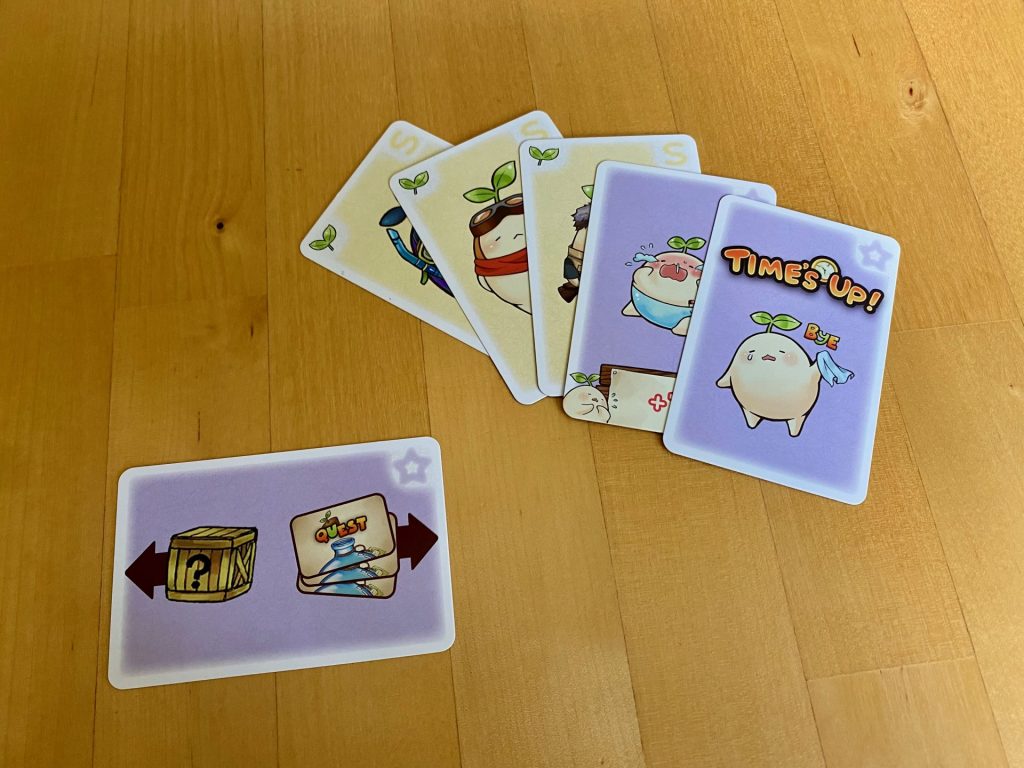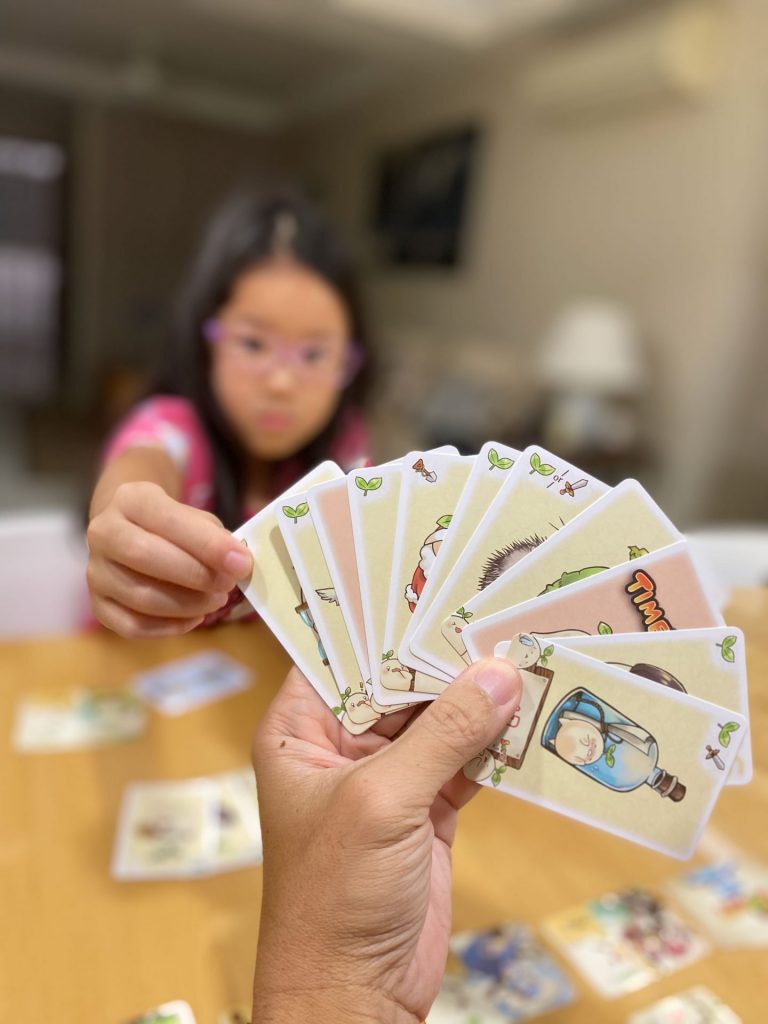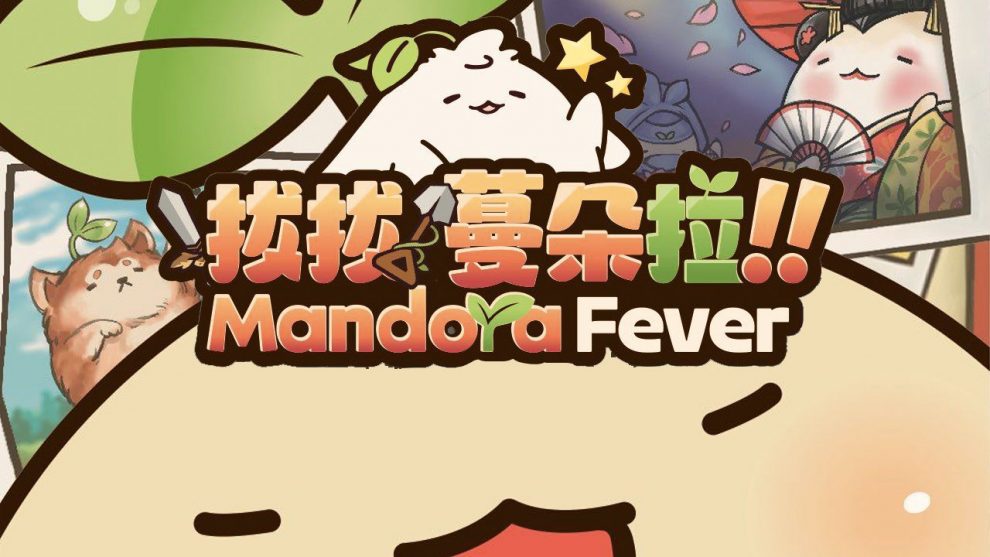Overview
In Mandora Fever, players build up a little village of mandrakes by enlisting the help of villagers who can provide them with food, protection and labor. But they have to be careful not to be greedy lest they end up with nothing to show for their efforts!
Set Up

The game is set up by laying out a display tableau of three Quest Cards with missions to accomplish and accompanying Village Mandora cards. Each player begins with three Mandora Villagers which provide Food in the shape of the leaf icon at the top left of the card. They also get a Times Up! Card which ends the turn for the active player and one Baby Mandora Villager, which as infants go, is useless and provides no resources, except for wanting more and forcing active players to draw one more card.

Game Play
During a turn, players draw cards from their opponents hand to shore up resources that they use to complete Quest card missions and gain accompanying Villager Mandora cards.
Now about those Mandora Cards, these villagers come with some personality in the form of special actions. These actions determine if the active player is forced to draw one or more cards. Which sounds great since you are getting more resources but also might work against their calculated odds forcing them to draw that dreaded Times Up! Card that busts their entire hand of resources, which then returns to the opponent.
If active players manage to stop before their hand gets busted, they get to keep the resources and in exchange, use them to complete any of the three missions available. In the event that they do not have enough resources because they had to return all their resources or the opponent they drew cards from had too small a hand of cards, then the Village Elders are there to provide them the difference of pretty much anything they need to claim at least one Quest card and the accompanying Village Mandora card.
Any Village Mandora cards whose resources remain unused, can be kept for a later turn. Some Quests cards also provide one-time resources that can be used in following turns. These are placed to the left of the Player Aid as their stash.
The Village Mandora cards that provided the resources used to accomplish missions on the Quest cards as well as the accompanying Village Mandoras with that mission, go into the active player’s hands. Any Quest Cards claimed are placed to the right of the Player aid to be scored at the end of the game and play passes to the next player. The game ends when there are not enough Quest cards to refill the tableau and the player with the most points from their Quest cards wins the game.

Components
Mandora Fever is a small box game made up of a deck of 60 cards. 15 Quest Cards with missions on the reverse side, 37 Villager Mandora Cards which provide resources used to accomplish the missions, four Player Aid cards which organizes the playing space, four Times Up! cards and four Baby Mandora cards.
Final Thoughts

The Push-Your-Luck mechanism in Mandora Fever is very addictive. It has turned us, adults and kids alike, into a den of gamblers. I do not like games whose probability math get too complex in family games because that skews it to the adults’ favor who are more experienced. In Mandora Fever however, there is just one card that can blow up your hand so the math is easy enough for young players to grasp that they stand better odds when drafting cards from a larger hand. Because success breeds success, as the kids internalize the odds, they keep wanting to play more to see how far they can push their luck and prove to themselves that they know when it is time to stop. So, do they stop before we blow up? That, is parenting young kids right there in reality, but this time in a safe and permissible gaming environment.
As an adult player, I love how this simple game makes me think about the dynamic relationships between players when we are drawing resources from our opponents hands. It makes the active player’s relationship with opponents more complex; you want them to succeed on their turn by gaining the most resources so that, you in turn will have more cards to draw and more resources to use on your turn. More cards in your opponents’ hands also tilt the probability in your favor so as not to draw the Times-Up! card. But them being successful, also means that they will be able to pick out more valuable Quest Cards for themselves. To be honest, I have not once cared much for what my final scores are. I am a sucker for wanting to fine tune that relationship with my competitors so that makes me keep coming back to this game for more.












Add Comment